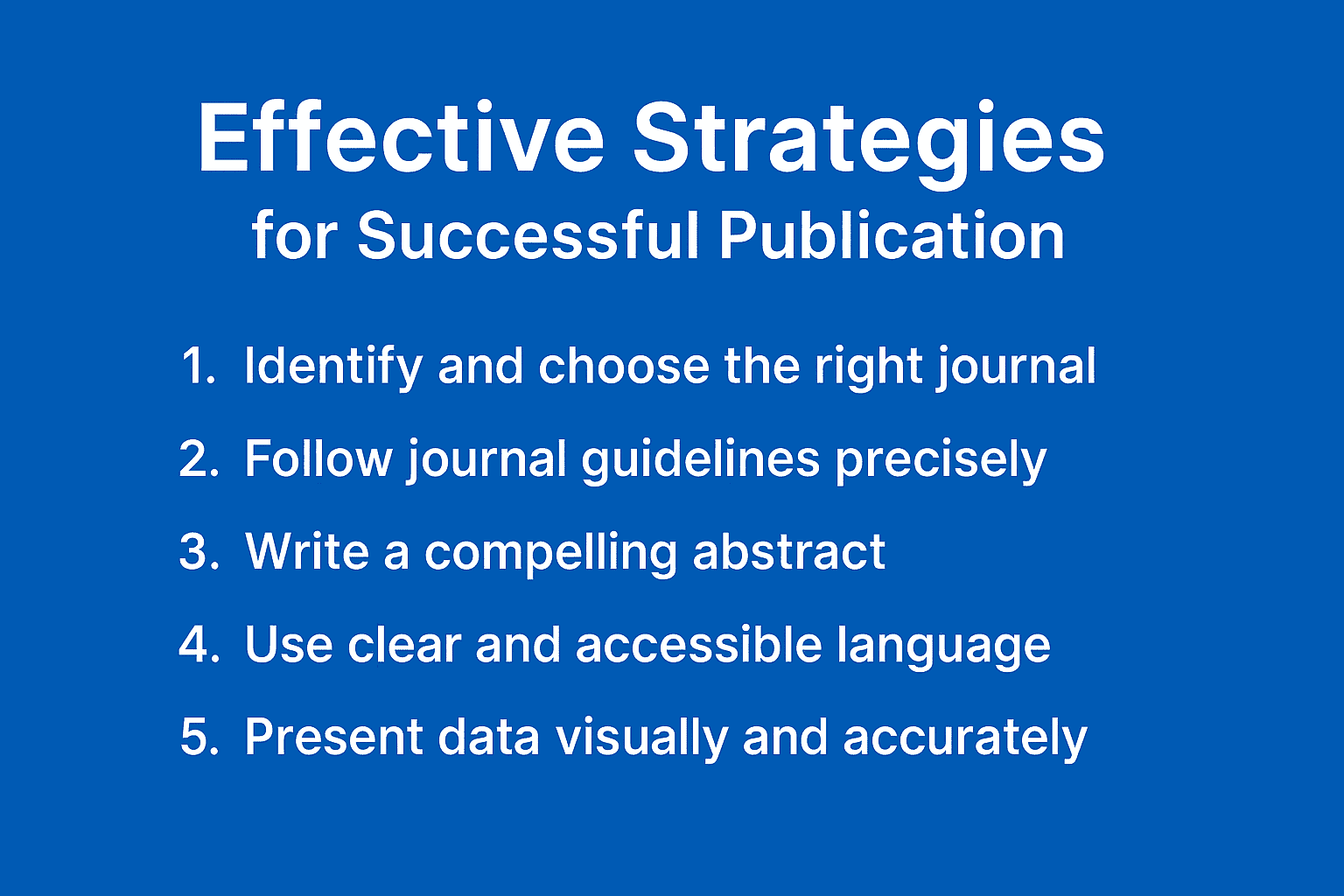by JohnK — 30th Jan 2025
How to Publish Research Papers in High-Impact Journals: Tips and Strategies

Introduction
Publishing in high-impact journals is a prestigious achievement for any researcher, symbolizing the credibility and significance of their work. These journals often set the benchmark for research quality, offering broader visibility, potential for citations, and professional growth. However, the road to publishing in such journals is rarely straightforward. Many scholars, particularly early-career researchers, find themselves grappling with strict editorial standards, demanding peer reviews, and complex submission guidelines.
This essay aims to delve into the major challenges of publishing in top-tier journals, while also providing actionable strategies and expert tips. Tools like CitezAI are emerging as invaluable assistants for researchers, helping refine writing, structure ideas, and prepare manuscripts with precision.
Challenges of Publishing in High-Impact Journals
1. Upholding Research Rigor
High-impact journals demand research that is not only original but also methodologically sound. This includes well-defined hypotheses, appropriate sampling, robust statistical analysis, and reproducible results. For instance, in the field of medicine, a randomized control trial (RCT) must strictly adhere to CONSORT guidelines. A study with unclear methodology or inconsistent data interpretation is likely to be rejected, regardless of its novelty.
2. Relevance and Novelty
Editors seek research that pushes boundaries or fills significant gaps. A literature review may be comprehensive, but if it doesn’t offer fresh perspectives or synthesize insights in a novel way, it may not make the cut. For example, an AI-based diagnostic tool that builds on existing technology but significantly increases accuracy can stand out as both relevant and innovative.
3. High Rejection Rates
Journals like Nature, Science, and The Lancet have acceptance rates below 10%. Even strong submissions can be turned down due to thematic misalignment, lack of space, or editorial priorities. This makes journal selection and aligning your work with the publication’s scope even more critical.
Effective Strategies for Successful Publication
Publishing in high-impact journals is no small feat — it requires not just strong research, but also strategic planning, technical accuracy, and professional presentation. Here are some effective, actionable strategies to significantly increase your chances of acceptance.
1. Identify and Choose the Right Journal
A common mistake among early-career researchers is submitting to journals that don’t align with the scope or theme of their paper. To avoid this, start by identifying journals that have previously published work similar to yours. Check their aims, scope, and recent articles to ensure a good fit.
Example: If you're conducting a study on AI in healthcare, submitting to a general computer science journal might not be as effective as choosing a specialized journal like "Journal of Biomedical Informatics" or "Nature Digital Medicine."
2. Follow Journal Guidelines Meticulously
Every journal has its own formatting, structure, and submission requirements — from referencing style to figure dimensions. Ignoring these may lead to immediate rejection without peer review.
Example: If a journal requires APA citations and your manuscript uses MLA, it reflects poorly on your attention to detail. Tools like Citez.ai can help automatically format references and ensure consistency.
3. Write a Compelling and Clear Abstract
The abstract is your first impression — often the only part editors and reviewers read before deciding whether to proceed. It should clearly summarize your objective, methodology, key findings, and implications.
Example: Rather than writing "This paper explores AI in medicine," a more effective abstract line would be: "This study evaluates the efficacy of machine learning algorithms in predicting cardiovascular risk, demonstrating a 20% improvement over traditional models."
4. Use Clear and Accessible Language
Even in technical fields, clarity trumps complexity. Avoid jargon unless it’s necessary, and explain all key terms. Reviewers appreciate manuscripts that are easy to follow and well-articulated.
Example: Instead of "we employed a heteroscedastic regression technique," try "we used a statistical method that adjusts for varying levels of variability in the data."
5. Present Data Visually and Accurately
Tables, graphs, and visualizations aren’t just aesthetic — they help reviewers quickly understand your results. Use clear labels, legends, and avoid clutter. Also, ensure your data supports your conclusions.
Example: If your study involves time-series analysis, a well-structured line graph with clear color coding can help communicate trends better than a table with raw numbers.
6. Revise Based on Peer Review Feedback
Rejection isn’t the end — it's often part of the process. Address reviewer comments respectfully and in detail, even when you disagree. This shows professionalism and dedication to quality.
Example: If a reviewer questions your sample size, respond with either statistical justification or clarify the constraints that limited the size — possibly suggesting it as an area for future research.
7. Use Citez.ai to Elevate Your Manuscript
Before submitting, run your manuscript through Citez.ai for a comprehensive review. It checks grammar, technical formatting, citation accuracy, and more. This final polish can be the difference between “revise and resubmit” and “accepted.”
Example: Citez.ai’s manuscript checker can help you detect passive voice overuse, incorrect citation styles (like APA vs. Chicago), and even identify overused buzzwords — all of which affect your submission readiness.
In summary, succeeding in academic publishing isn’t just about having strong research — it’s about how you communicate, package, and present your work. By following these detailed strategies and tools like Citez.ai, researchers can improve their odds of publishing in high-impact journals and gaining the recognition they deserve.
Conclusion
Success in publishing research in high-impact journals hinges on more than quality research—it requires strategic preparation, excellent writing, and an understanding of what editors and reviewers are looking for. From selecting the right journal to refining every sentence, each step is crucial.
With tools like Citez.ai, researchers now have the support they need to enhance their writing process, avoid common pitfalls, and submit manuscripts that meet the highest standards. Whether you're a PhD student or a seasoned scholar, CitezAI can help turn your research into a publishable paper—faster and smarter.